(Click for full-size picture)

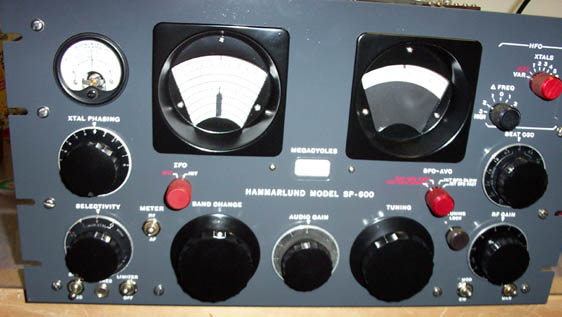
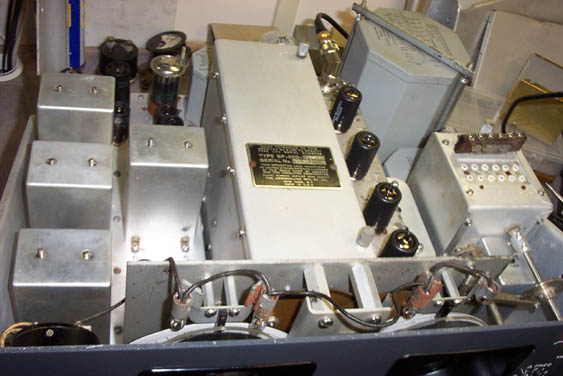
I did refinish the front panel. I used a darker grey so the engraving and the dials stand out better. I did repaint the black knobs knobs on this one (not the red ones). They were quite dull. I did not try to repaint the meter. I was worried that some paint would get into the mechanism. I applied dial overlays to both the frequency and the vernier dials (originals on the back). I also had to overlay the band readout dial. Large hunks of paint had flaked off.
I will warn you that the unit, in person, doesn't look as good as these pictures look. I don't quite know why, but the pictures look great, whereas the actual unit has some nicks and scrapes and rust spots on the chassis. I replaced a lot (not all) of the hardware with stanless - especially on the front panel. Every time I took a screw out, I replaced it with stainless, and every time there was a markedly rusty nut or screw that I could get to, I replaced it.
All the controls on this unit operate smoothly and without problem. The BFO select rotary switch disintegrated when I took it apart. I replaced it with one with ceramic wafers instead of bakelite. One curious side-effect is that all I had was a 5-position switch instead of the original 4-position switch, so there is an extra "hidden" setting. I wired it to be the same as the first position, so there is no additional functionality.
The skirt of the AF gain knob has a sorta white wash on it that I couldn't clean off. You can see it is a bit whiter on the front panel picture. Sorry. There is also one red knob that is a bit funky - it didn't clean up really well. I did go through and replace all the set screws in the knobs with stainless. Maybe they won't freeze up like the originals did..
(Click for full-size picture)
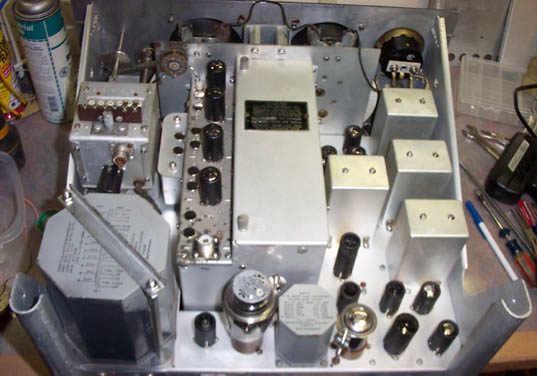
De-Oxit was applied to all the tube sockets. The chassis did not need any work - it wasrelatively clean and square. It was apparent that this receiver had not been dropped or otherwise mishandled. There were no bent edges or crushed corners. I replaced the missing tube hold-down clips on V3, and V17.
(Click for full-size picture)
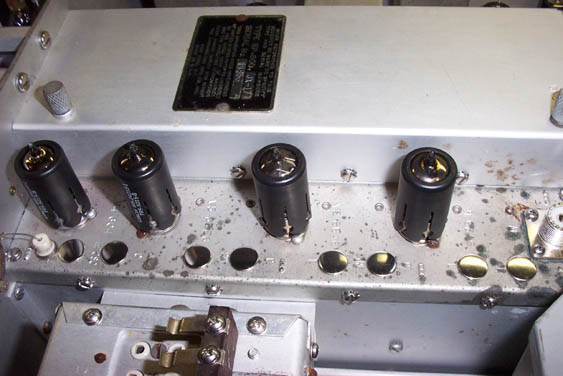

You notice that the FCU (the crystal oscillator) has the 6AH6 tube on this model (as opposed to the 6AC7 on other models).
(Click for full-size picture)
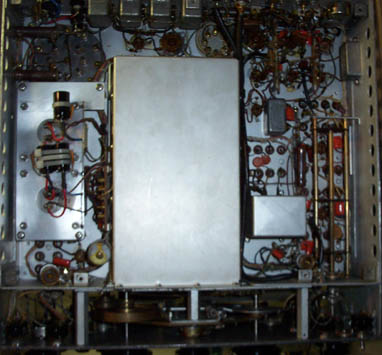

This one came with two of those cool original red plastic covers for the back panel connectors. They are hard and stiff and don't come off easily, but they look neat. I wish I had some more of them.
(Click for full-size picture)

(Click for full-size picture)


Sorry about the two-toned power transformer. I was worried about the rust spots, so I sanded them down to bare metal then hit it with some rust-o-leum. Of course, the paint was a different shade, so we have a two-tone transformer.